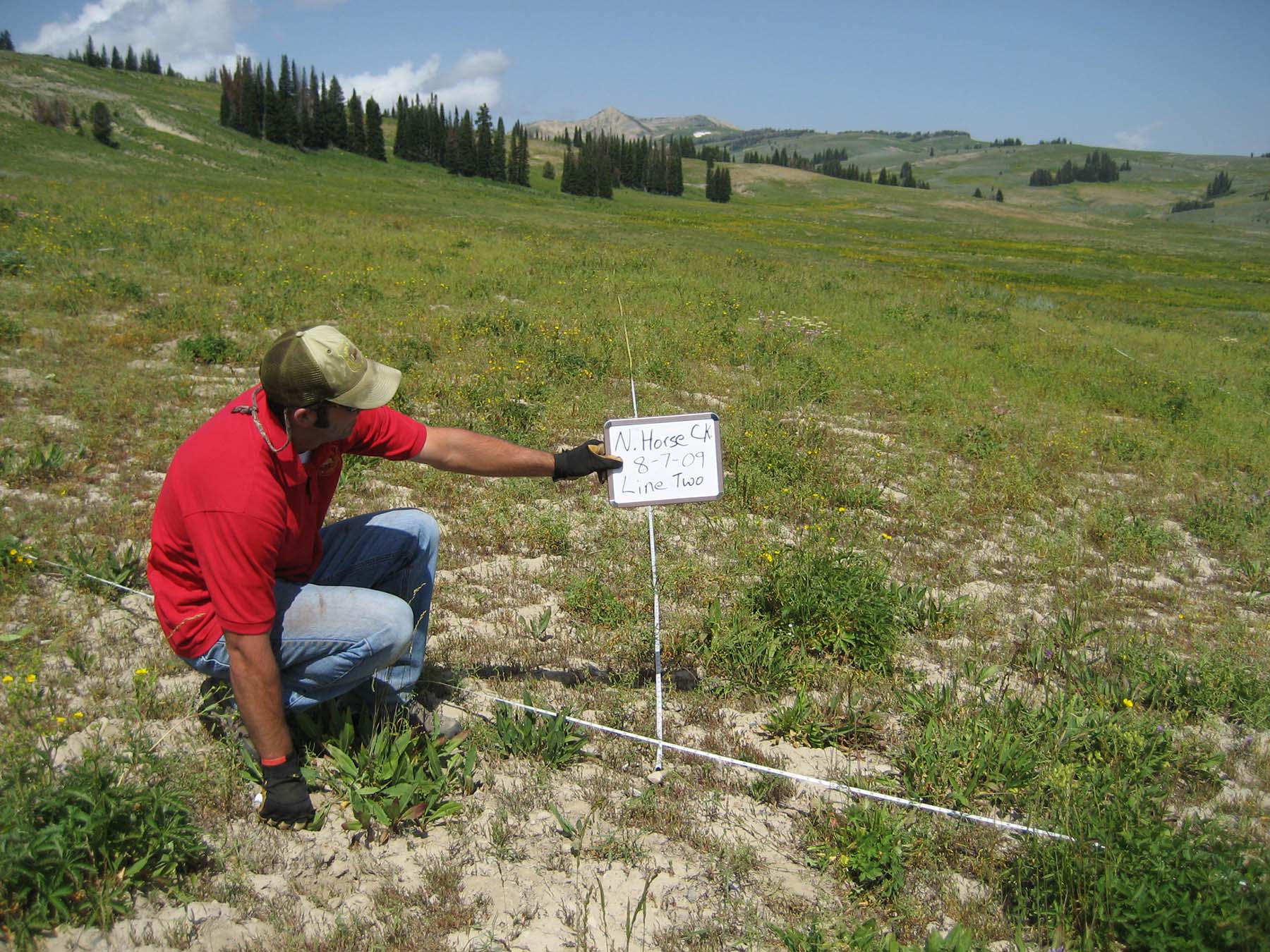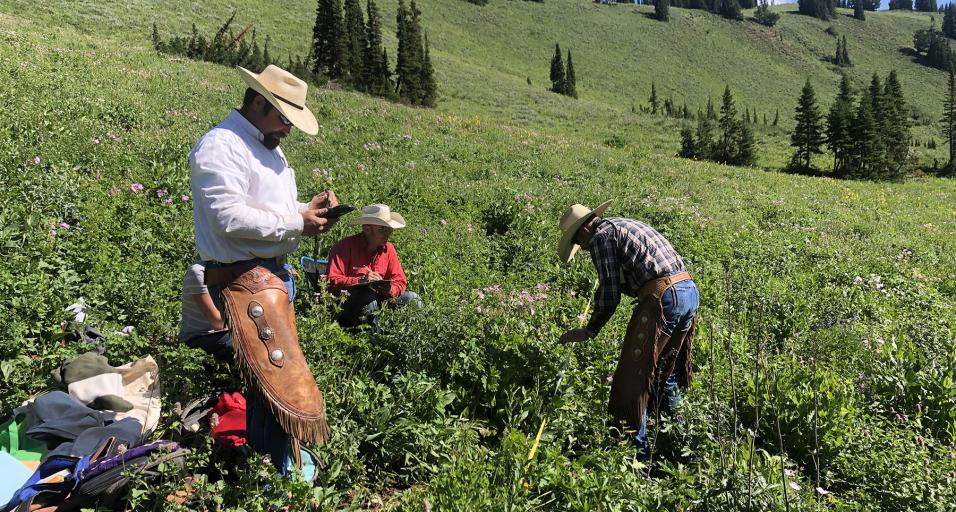Tall Forb Monitoring in the Wyoming Range
Wyoming Game and Fish habitat biologists from the Pinedale Region were joined by personnel from the Sublette County Conservation District, Bridger Teton National Forest and Wyoming Department of Agriculture to monitor tall forb communities in the Wyoming Range recently. More specificly, the interagency group was monitoring the vegetation in two retired grazing allotments, the Wyoming Range Allotment Complex and the Triple Peak Forage Reserve, to measure the current range condition and vegetation response since the grazing allotments were retired 12 and 14 years ago respectively.
Both allotments are important wildlife habitat used by mule deer, elk, moose, and a plethora of non-game species. Plus, these headwater areas are very important for fish populations as their condition can greatly influence sediment loads and erosion into streams.

Pinedale Fish Biologist Darren Rhea holds the white board for a photo point while monitoring vegetation in the North Horse Creek portion of a forage reserve in 2009.
The retired grazing allotments are intended to be available as a short-term grazing for domestic sheep when displaced by prescribed or wild fires. Once the vegetation recovers to at least 80 percent ground cover with certain key plant species, the forage reserves will be made available to current Bridger Teton National Forest sheep permittees as an alternative pasture. To date, the allotments have not met the 80 percent ground cover requirement.
Both allotments are important wildlife habitat used by mule deer, elk, moose, and a plethora of non-game species. Plus, these headwater areas are very important for fish populations as their condition can greatly influence sediment loads and erosion into streams.
Pinedale Fish Biologist Darren Rhea holds the white board for a photo point while monitoring vegetation in the North Horse Creek portion of a forage reserve in 2009.
The retired grazing allotments are intended to be available as a short-term grazing for domestic sheep when displaced by prescribed or wild fires. Once the vegetation recovers to at least 80 percent ground cover with certain key plant species, the forage reserves will be made available to current Bridger Teton National Forest sheep permittees as an alternative pasture. To date, the allotments have not met the 80 percent ground cover requirement.
Mark Gocke, Public Information Specialist, 307-249-5811

